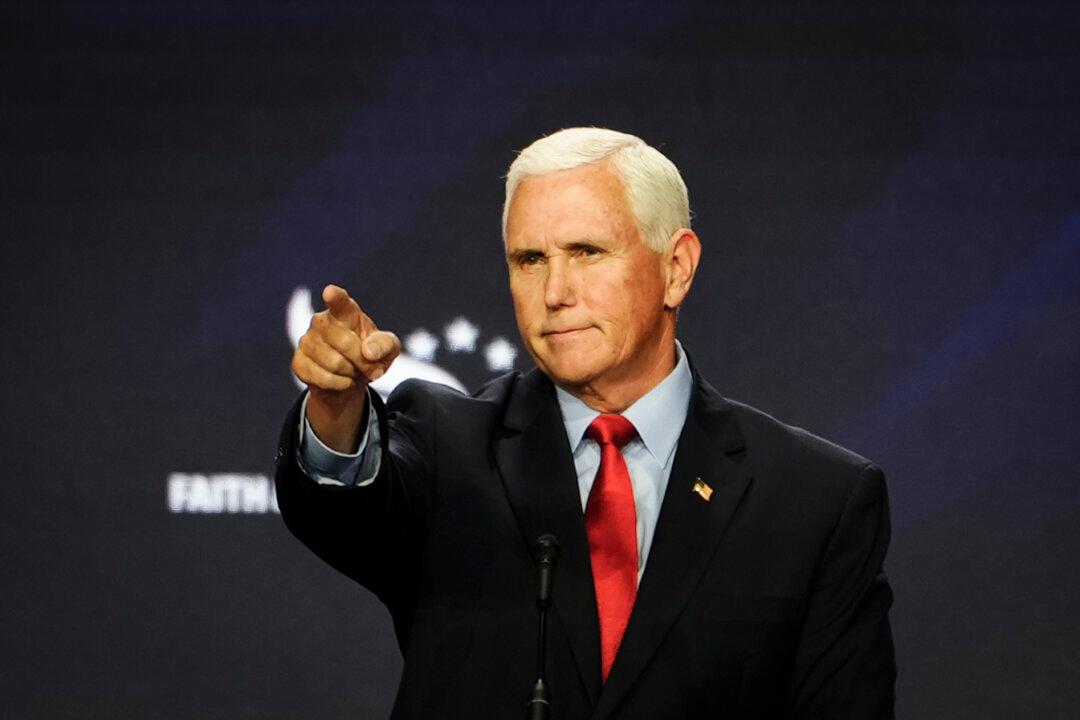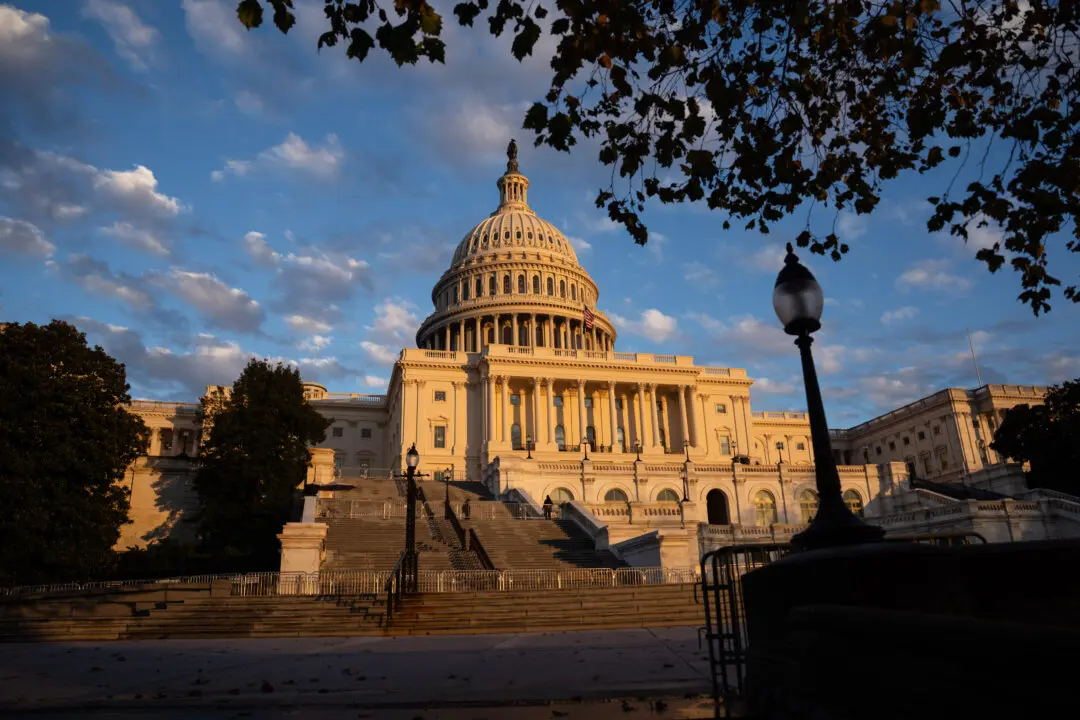BEDFORD, N.H.—Former Vice President and Republican presidential candidate Mike Pence wants to increase U.S. defense spending by $1.3 trillion over 10 years to counter the military buildup by the Chinese Communist Party (CCP). The Pence plan would set a minimum amount for annual defense spending tied to the nation’s gross domestic product (GDP).
“I mean for heaven’s sake, China’s dropping a new battleship in the Asia Pacific about once a month. And we actually have an administration that’s cutting back military spending,” Mr. Pence said at a national security forum at the Bedford Event Center on Aug. 5.





